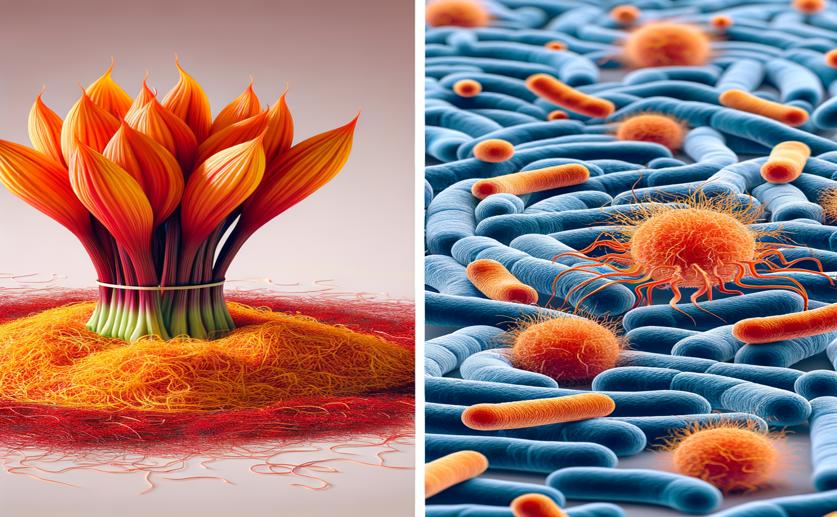
New Discoveries in How Our Gut Bacteria Process Saffron Compounds
Greg Howard
23rd August, 2024

Image Source: Natural Science News, 2024
Key Findings
- Researchers from CEBAS-CSIC studied how saffron's main compounds, crocin-1 and crocetin, are metabolized by the human gut microbiota
- Crocin-1 quickly loses its glucose molecules and transforms into crocetin within six hours
- New microbial metabolites, including dihydro and tetrahydro crocetins, were identified for the first time, suggesting the gut microbiota's significant role in saffron's bioactivity
References
Main Study
1) New findings in the metabolism of the saffron apocarotenoids, crocins and crocetin, by the human gut microbiota.
Published 22nd August, 2024
https://doi.org/10.1039/d4fo02233e
Related Studies
2) Saffron: An Old Medicinal Plant and a Potential Novel Functional Food.
3) Nutritional and health beneficial properties of saffron (Crocus sativus L): a comprehensive review.
4) Saffron against Neuro-Cognitive Disorders: An Overview of Its Main Bioactive Compounds, Their Metabolic Fate and Potential Mechanisms of Neurological Protection.



 31st July, 2024 | Greg Howard
31st July, 2024 | Greg Howard